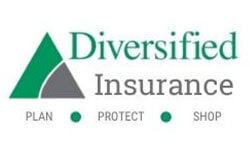Understanding the Concept of Whole Life Insurance
Table of Contents
Understanding the Concept of Whole Life Insurance
Whole life insurance is a type of permanent life insurance that provides coverage for the entire lifetime of the insured individual. Unlike term life insurance, which offers coverage for a specific period, whole life insurance offers lifelong protection as long as the premiums are paid. This type of policy not only provides a death benefit to the beneficiaries upon the insured’s death but also includes a cash value component that grows over time.
The cash value component of whole life insurance is what sets it apart from other types of life insurance. A portion of the premium payments made by the policyholder goes towards building this cash value, which accumulates over time. The cash value grows on a tax-deferred basis, meaning that policyholders do not have to pay taxes on the growth until they withdraw or borrow against it.
Whole life insurance policies also typically come with a guaranteed death benefit, which means that the amount paid out to the beneficiaries is guaranteed and will not decrease as long as the premiums are paid. This can provide peace of mind to policyholders, knowing that their loved ones will be financially protected after their passing.
While whole life insurance offers many benefits, it may not be suitable for everyone. The premiums for whole life insurance tend to be higher compared to term life insurance, making it a more expensive option. Additionally, the cash value component of whole life insurance grows at a relatively slow rate, and policyholders may not see significant returns on their investment until several years into the policy.
Explaining the modifications in modified whole life insurance
Modified whole life insurance, as the name suggests, comes with certain modifications compared to traditional whole life insurance policies. One of the key modifications is the premium payment structure. In modified whole life insurance, the premiums start off lower during the initial years and gradually increase over time.
This staggered premium payment structure can be appealing to individuals who have budgetary constraints but still want to secure life insurance coverage. By starting with lower premiums, policyholders can ease the financial burden in the early years when their income may be lower or when they have other financial obligations to prioritize. As their financial situation improves, they can better afford the higher premiums in later years.
The modifications in modified whole life insurance allow policyholders to have more flexibility in managing their premiums based on their financial circumstances. However, it’s important to note that the increased premiums in later years can be a significant financial commitment. Policyholders need to carefully consider whether they will be able to afford the higher premiums as they age.
Pros and cons of modified whole life insurance
Modified whole life insurance offers several advantages and disadvantages that individuals should consider before deciding whether it’s the right option for them. Let’s explore the pros and cons of this type of insurance policy.
Pros of modified whole life insurance
- Flexibility in premium payments: The staggered premium payment structure of modified whole life insurance allows policyholders to start with lower premiums and gradually increase them over time. This flexibility can be beneficial for individuals who anticipate their financial situation improving in the future.
- Lifelong coverage: Like traditional whole life insurance, modified whole life insurance provides coverage for the entire lifetime of the insured individual. This ensures that the policyholder’s loved ones are financially protected after their passing.
- Cash value accumulation: Modified whole life insurance policies also come with a cash value component that grows over time. This can serve as a savings or investment tool, providing policyholders with a source of funds that they can access during their lifetime.
Cons of modified whole life insurance
- Higher premiums in later years: While the lower premiums in the early years can be attractive, it’s important to consider the financial commitment of the higher premiums in later years. Policyholders need to ensure that they will be able to afford the increased premiums as they age.
- Slower cash value growth: The cash value component of modified whole life insurance grows at a relatively slow rate compared to other investment options. Policyholders may not see significant returns on their investment until several years into the policy.
- Limited flexibility to modify coverage: Once a modified whole life insurance policy is in place, it can be challenging to modify the coverage or switch to a different type of policy. Policyholders need to carefully consider their long-term needs and ensure that modified whole life insurance aligns with their financial goals.
Who can benefit from modified whole life insurance?
Modified whole life insurance can be a suitable option for individuals who have specific financial circumstances and goals. Here are some situations where modified whole life insurance may be beneficial:
- Young professionals: Young professionals who are just starting their careers and have limited income may find the lower premiums in the early years of modified whole life insurance more manageable. As their income grows, they can better afford the higher premiums in later years.
- Individuals with fluctuating income: For individuals whose income fluctuates, such as freelancers or seasonal workers, modified whole life insurance can provide the flexibility they need. They can start with lower premiums during leaner months and increase them during periods of higher income.
- Individuals with anticipated financial improvements: If an individual expects their financial situation to improve in the future, such as through promotions or business growth, modified whole life insurance can be a strategic choice. They can secure coverage now at a more affordable rate and adjust their premiums as their income increases.
It’s important to note that every individual’s financial situation is unique, and what works for one person may not work for another. Consulting with a financial advisor or insurance professional can provide personalized insights and help determine whether modified whole life insurance is the right choice.
How to qualify for modified whole life insurance
Qualifying for modified whole life insurance follows a similar process to other types of life insurance. Insurance companies assess several factors to determine eligibility and premium rates. Here are some key factors that insurers consider:
- Age: The age of the applicant plays a significant role in determining the premiums for modified whole life insurance. Generally, the younger the applicant, the lower the premiums.
- Health condition: Insurance companies typically require applicants to undergo a medical examination to assess their overall health. The results of the medical examination, along with any pre-existing conditions, can influence the eligibility and premium rates for modified whole life insurance.
- Smoking status: Smoking is a significant risk factor for insurers, and smokers generally pay higher premiums compared to non-smokers. Quitting smoking or not smoking at all can lead to lower premium rates.
- Occupation: Some occupations carry higher risks, such as those involving hazardous environments or high-stress levels. Insurers may consider the applicant’s occupation when assessing eligibility and premium rates.
It’s important to provide accurate and honest information during the application process to ensure that the policy is valid and meets the individual’s needs. Insurance companies may also offer riders or additional coverage options that can be added to the modified whole life insurance policy for an extra cost. These riders can provide additional benefits such as accelerated death benefit or waiver of premium.
Comparing modified whole life insurance with other types of life insurance
Modified whole life insurance is just one of several types of life insurance available in the market. It’s important to understand how it compares to other options to make an informed decision. Here’s a comparison between modified whole life insurance and other common types of life insurance:
- Term life insurance: Term life insurance provides coverage for a specific period, such as 10, 20, or 30 years. It tends to have lower premiums compared to whole life insurance but does not offer a cash value component. Term life insurance can be a suitable choice for individuals who need coverage for a specific period, such as during their working years or until their mortgage is paid off.
- Universal life insurance: Universal life insurance is another type of permanent life insurance that offers flexibility in premium payments and death benefit amounts. It also includes a cash value component, but the growth rate may be higher compared to modified whole life insurance. Universal life insurance can be appealing to individuals who want more control over their policy’s features and premium payments.
- Variable life insurance: Variable life insurance combines a death benefit with investment options. Policyholders have the opportunity to invest the cash value portion of the policy in various investment vehicles such as stocks or mutual funds. This type of insurance can be suitable for individuals with a higher risk tolerance and a desire for potential higher returns on their investment.
Each type of life insurance has its own advantages and considerations. It’s crucial to evaluate personal goals, financial circumstances, and risk tolerance when choosing the most appropriate type of life insurance.
Factors to consider when choosing a modified whole life insurance policy
When selecting a modified whole life insurance policy, several factors should be taken into account. Here are some key considerations:
- Premium affordability: Evaluate the affordability of the premiums, both in the initial years and when they increase. Ensure that the premiums align with the budget and financial goals in the long term.
- Policy features: Understand the specific features of the modified whole life insurance policy, such as the death benefit amount, cash value growth rate, and any additional riders or options available. These features can vary among insurance companies, so it’s essential to compare policies.
- Financial stability of the insurer: Research the financial stability and reputation of the insurance company offering the modified whole life insurance policy. Look for ratings from independent rating agencies to assess the company’s ability to meet its financial obligations.
- Policy flexibility: Consider whether the modified whole life insurance policy allows for any flexibility in modifying the coverage or adjusting the premium payments. Life circumstances can change, so having some flexibility can be beneficial.
- Long-term financial goals: Evaluate how modified whole life insurance fits into long-term financial goals. Consider whether the cash value component aligns with investment objectives or whether other investment options may be more suitable.
By considering these factors, individuals can make an informed decision and select a modified whole life insurance policy that meets their needs and financial goals.
Common misconceptions about modified whole life insurance
There are several misconceptions surrounding modified whole life insurance that can lead to confusion. Let’s address some of the common misconceptions:
- Misconception: Modified whole life insurance is the same as traditional whole life insurance. While both types of policies share similarities, such as providing lifelong coverage and a cash value component, modified whole life insurance has a different premium payment structure. The staggered premiums in modified whole life insurance distinguish it from traditional whole life insurance.
- Misconception: Modified whole life insurance is a one-size-fits-all solution. Modified whole life insurance may be suitable for some individuals but not for others. Its advantages and disadvantages should be carefully considered based on individual financial circumstances and goals.
- Misconception: Modified whole life insurance guarantees high returns on investment. The cash value component of modified whole life insurance grows at a relatively slow rate compared to other investment options. While it offers the potential for tax-deferred growth, policyholders may not see significant returns until several years into the policy.
- Misconception: Modified whole life insurance is only for individuals with low income. While modified whole life insurance can be appealing to individuals with limited income, it can also benefit those who anticipate their financial situation improving in the future. The flexibility in premium payments allows policyholders to adjust their premiums as their income grows.
Understanding these misconceptions can help individuals make more informed decisions about whether modified whole life insurance aligns with their financial goals.
Conclusion: Is modified whole life insurance right for you?
Modified whole life insurance offers a unique combination of flexibility and lifelong coverage. It can be an attractive option for individuals who have budgetary constraints but still want to secure life insurance protection. By starting with lower premiums and gradually increasing them over time, policyholders can better accommodate their financial circumstances.
However, it’s important to carefully consider the potential drawbacks of modified whole life insurance, such as the higher premiums in later years and the relatively slow cash value growth. Policyholders should assess their long-term financial goals, affordability of premiums, and compare different types of life insurance policies before making a decision.
Ultimately, the suitability of modified whole life insurance depends on individual financial circumstances, risk tolerance, and goals. Consulting with a financial advisor or insurance professional can provide personalized guidance and help determine whether modified whole life insurance is the right choice for you.
Remember, life insurance is an important tool for protecting your financial future, and making an informed decision can provide peace of mind for you and your loved ones.




